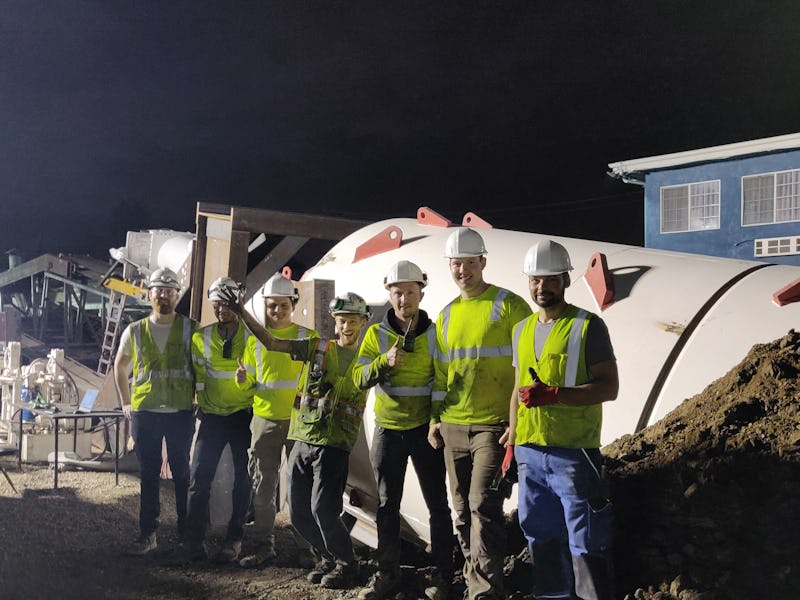The Boring Company’s new machine is ground-breaking in more ways than one
Elon Musk's tunnel-digging venture has reached a new phase.

The Boring Company has metaphorically broken new ground, with the announcement that "Prufrock is alive." Although it seems a rather opaque reveal, Sunday's Twitter post suggests the company's capabilities are reaching new levels.
Elon Musk's tunnel-digging venture, currently building a transit system for the Las Vegas Convention Center, announced via its Twitter account that its new machine is online. The new machine, mentioned by Musk in December 2018, is the third generation of tunnel digger and was originally described by Musk as "10 times better" than the company's original digger dubbed "Godot."
But while 10 times better is impressive, its most impressive features could come from the fact that it's custom-designed. Teslarati notes that Musk explained "Prufrock" at the company's May 2018 event:
“Godot, which is the name of the first machine, is a conventional tunnel boring machine… So going from Godot to Line-Storm, Line-Storm is a highly modified boring machine, but it’s essentially a hybrid between a conventional boring machine and Prufrock, which is the fully Boring Company-designed machine. So Prufrock, that will be quite a radical change. Prufrock will be about ten times, aspirationally 15 times faster than current boring machines. I think very likely ten times.”
The Boring Company announcing that Prufrock is alive.
"Prufrock," likely a reference to the T.S. Eliot poem “The Love Song of J. Alfred Prufrock,” could be a big step toward the company bringing tunneling costs down further. Musk first detailed the company at the start of 2017, with the goal of digging more tunnels for car traffic.
The company's website outlines a number of ideas for making tunneling more efficient. This includes tripling the amount of power going to each machine, upgrading the cooling system to reach higher levels. It also involves modifying the machine, so the machine can tunnel while the team is erecting supports instead of switching off. The company's goals also include automation, electrification, and research funding.
"Godot" dug the first tunnel in December 2018, a 1.14-mile test track in Hawthorne, California. The machine raced against a snail called Gary, running in May 2018 at around one-fifteenth of the speed and improving. Built at a cost of just $10 million, the cost pales in comparison to the approximately $1 billion per mile for other projects. Musk declared in February 2019 that "Line-Storm" would go online in the following month.
The Boring Company has now focused its efforts on its first public tunnel. The $52.5 million public transport system runs two miles and is designed to transport people from the West Hall of the Las Vegas Convention Center to the South Hall. Two tunnels run side-by-side to offer bidirectional travel, and it's expected to come online before the 2021 Consumer Electronics Show, a popular industry event that will essentially allow the entire tech world to test out its capabilities in real time.
But a number of question marks remain. How many vehicles will the tunnel offer for passengers, how will the planned "platoon" service work, and what about plans for a broader city-wide network? The project is a major test for the company, and "Prufrock" has come online at what could be a make-or-break moment.